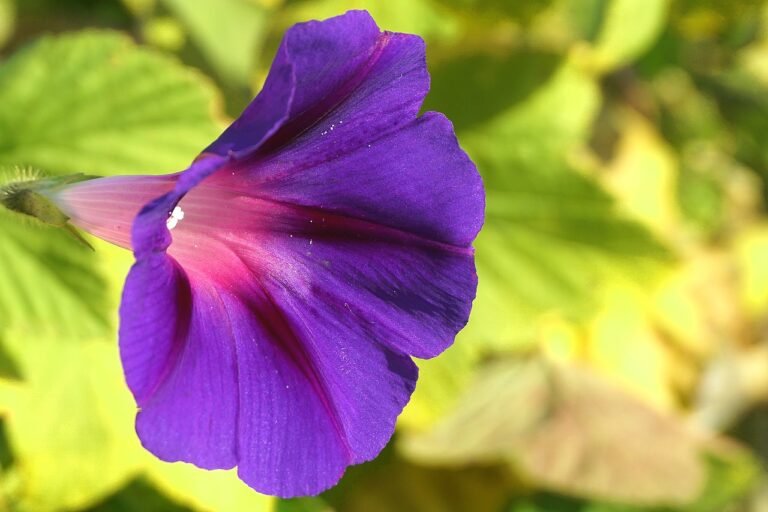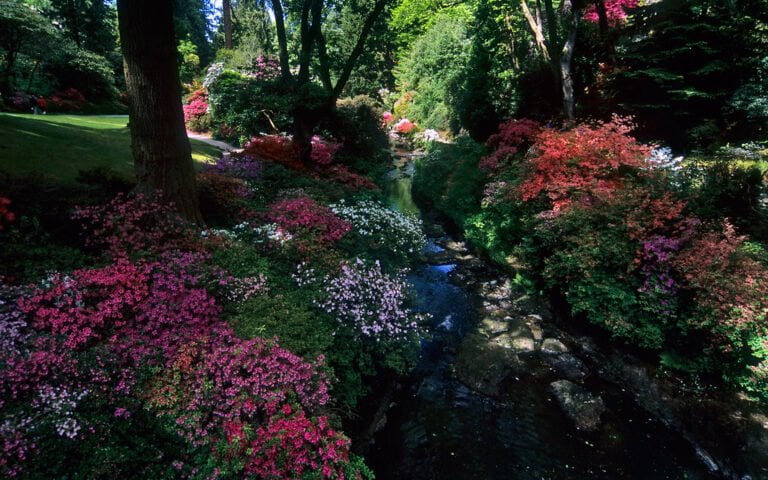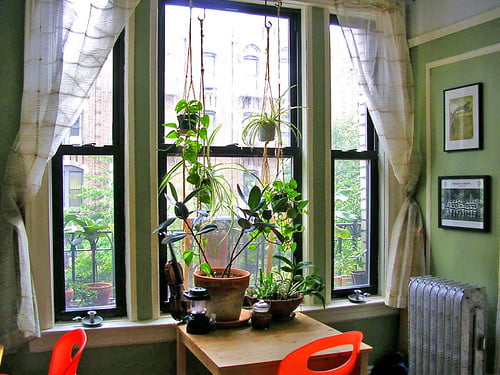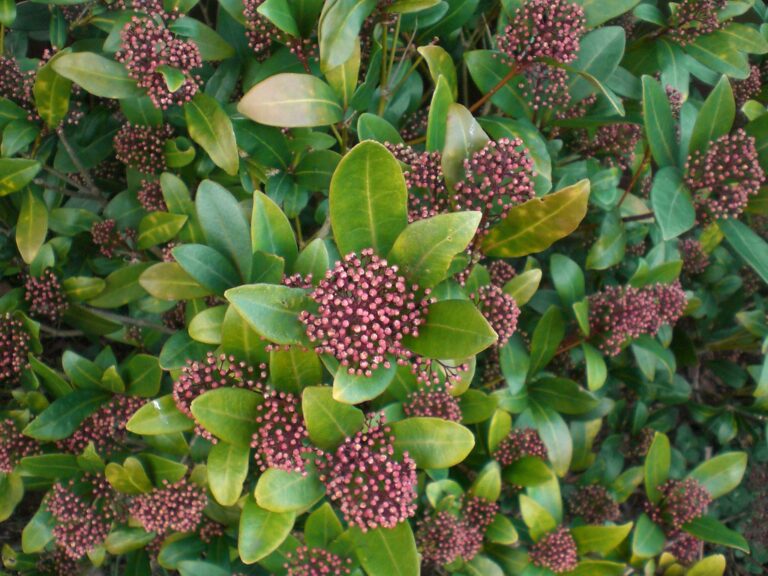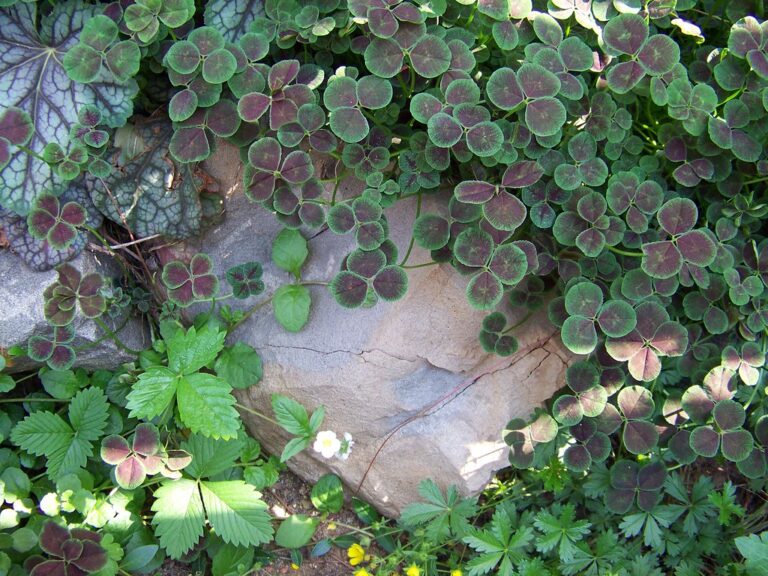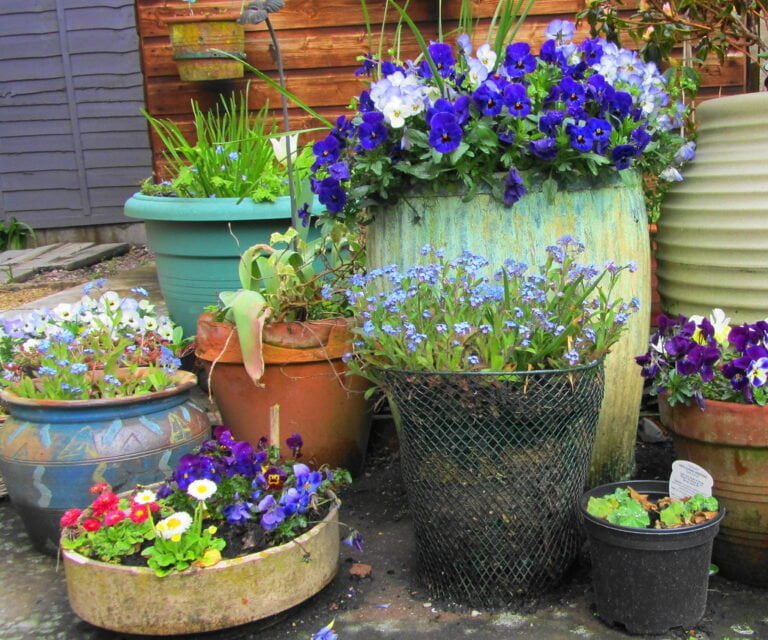Selecting the Right Plants for Shaded Areas: A Comprehensive Guide
Exploring shaded gardening means selecting plants suited to different shade levels for a vibrant garden. Consider dappled, partial, full, or deep shade for proper selection. Opt for ferns, hostas, and Pulmonaria for deep shade areas. In partial shade, Astilbe and Hakonechloa thrive with 3-6 hours of sunlight. Look for colorful foliage from Heuchera and Lamium. For blooms, choose Astilbe and Bleeding Heart in shaded spots. Groundcovers like Creeping Jenny suppress weeds. Regular pruning, watering, and mulching support plant health. Tailor care to specific plant needs. Improve your shaded garden with the right plants.
Understanding Shade Conditions
In shady areas, the different levels of shade, such as dappled shade, partial shade, full shade, and deep shade, play a significant role in determining which plants will thrive. Understanding these shade conditions is essential for selecting the right plants that are adapted to specific light levels. Plants that thrive in shade are specially adapted to lower light conditions, making them perfect for adding beauty to shaded areas in gardens or landscapes.
When considering shade levels, it’s important to note that shade gardens can flourish with as little as 2 hours of direct sunlight daily. By recognizing the varying degrees of shade, from the gentle dappling of sunlight in dappled shade to the complete absence of direct light in deep shade, we can make informed choices about which plants will thrive best in each specific setting.
Choosing plants that are well-suited to the light levels of a particular shady area ensures not only their survival but also their growth and beauty. Proper plant selection based on shade conditions is key to creating a successful shade garden that is both visually appealing and sustainable. By paying attention to the nuances of shade and selecting plants accordingly, we can transform shaded areas into vibrant and thriving spaces.
Best Plants for Deep Shade
Thriving in deep shade areas can be achieved by carefully selecting plants that are specifically adapted to low light conditions. When dealing with deep shade, it’s important to pick shade-tolerant plants that can thrive in such challenging environments. Ferns are excellent choices for deep shade as they are adapted to low light levels and can add a lush, green touch to these areas. Hostas, specifically varieties like ‘Sum and Substance’ or ‘Guacamole’, are also well-suited for deep shade, bringing in different textures and colors.
For some added color in deep shade areas, consider planting Pulmonaria, commonly known as Lungwort. Pulmonaria varieties like ‘Raspberry Splash’ or ‘Sissinghurst White’ can not only tolerate deep shade but also provide beautiful blooms that brighten up the space. Lamium maculatum, also known as Dead Nettle, is another great option for groundcover in deep shade areas. Its silver and green foliage can spread easily, filling in empty spaces and adding interest to the landscape.
As you select plants for deep shade, make sure they are known for their ability to thrive in low light conditions and moisture-retentive soil. By incorporating a variety of shade-tolerant plants like ferns, hostas, Pulmonaria, and Lamium maculatum, you can create a lush and visually appealing garden even in the darkest corners of your yard.
Thriving in Partial Shade
Partial shade conditions can be beneficial for a variety of plants, providing a balance between sunlight and shade that many shade-loving species thrive in. When choosing plants for partial shade areas, consider the following:
- Sunlight Daily: Plants flourishing in partial shade typically receive 3-6 hours of sunlight daily, making them suitable for areas with dappled or filtered sunlight.
- Shade-Loving Plants: Opt for shade-loving plants like Astilbe, Primula, and Hakonechloa, which are well-suited to partial shade environments.
- Foliage Colors: Discover plants with a range of foliage colors, from vibrant greens to deep purples, to add visual interest to shaded areas.
- Bloom Times: Select plants with staggered bloom times to make sure your partial shade garden has continuous bursts of color throughout the seasons.
- Light Requirements: Understanding the specific light needs of plants is crucial for successful gardening in partial shade. Some species may tolerate more sun exposure, while others prefer shadier conditions.
Colorful Foliage Options
Amidst the wide array of plants suitable for shaded areas, vibrant foliage choices like Heuchera, Lamium maculatum, Tiarella cordifolia, Pulmonaria spp., and Astilbe bring lively hues and visual interest to shaded gardens. Heuchera, also known as Coral Bells, offers a spectrum of leaf colors ranging from silvery to burgundy and even purple-black, making it a versatile option for adding pops of color in shady spots. Lamium maculatum, or Dead Nettle, not only provides silvery foliage but also boasts colorful blooms, creating a dynamic contrast in shaded areas. Tiarella cordifolia, commonly referred to as Foamflower, features matte leaves and delicate bottle-brush flowers, adding a touch of elegance to the natural aesthetics of shade gardens.
Pulmonaria spp., known as Lungwort, is another excellent choice for shaded areas, with its beautiful silvery foliage complemented by showy blossoms in white, pink, and blue. Finally, Astilbe plants are renowned for their vibrant flower plumes and striking foliage, which contribute texture and color to shaded landscapes. These colorful foliage plants not only thrive in low-light conditions but also enhance the visual appeal of shaded gardens, making them a must-have for gardeners looking to brighten up dim corners.
Shade-Loving Flowering Plants
I adore the vibrant beauty that shade-loving flowering plants bring to my garden. Best Shade Flowers like Bleeding Hearts and Astilbe thrive in low-light conditions, adding pops of color to dimly lit areas. Blooming in the shade, plants like Lungwort and Foxglove create a picturesque oasis in my shaded garden.
Best Shade Flowers
Thriving in dimly-lit conditions, shade-loving flowering plants like Astilbe, Bleeding Heart, and Foxglove bring vivid colors to shaded areas. These plants offer a variety of vibrant blooms in tones of pink, purple, white, and red, enhancing the beauty of shady gardens. In addition to their vibrant blooms, shade flowers such as Primrose and Lungwort provide visual interest with distinct foliage textures and colors, adding dimension to the garden. Many shade-loving flowering plants, like Heuchera and Tiarella, are low-maintenance, making them ideal for beginners or those with hectic schedules. By selecting a range of these shade flowers, one can create a lively and diverse garden even in shaded areas.
- Astilbe, Bleeding Heart, and Foxglove
- Primrose and Lungwort
- Heuchera and Tiarella
- Vibrant blooms in tones of pink, purple, white, and red
- Distinct foliage textures and colors
Blooming in Shade
In shaded areas, shade-loving flowering plants bring bursts of color and beauty with their vibrant blooms, creating a mesmerizing garden oasis. Bleeding Heart and Astilbe thrive in low-light conditions, showcasing colorful blooms. Lungwort and Foxglove are popular choices with attractive flowers that brighten shaded areas. For added vibrancy, consider planting Primrose and Tiarella, known for their vivid blooms that add a pop of color to shady gardens. Heuchera stands out with unique foliage and delicate flowers, adding elegance to shaded environments. These shade-loving plants not only survive but thrive in low-light conditions, enhancing the beauty of your shaded landscape with their striking blossoms.
Shade Garden Blossoms
Adding a burst of color and vibrancy to shaded areas, shade-loving flowering plants like Astilbe and Bleeding Heart are essential for creating a stunning shade garden. Lungwort and Foxglove are popular choices known for their showy blooms and foliage, while Primroses thrive in shady spots with partial sun, offering vibrant colors and easy maintenance. Digitalis (Foxglove) is a reliable shade plant that reseeds yearly, featuring tall, slender stems with beautiful flowers. Euphorbia varieties like Euphorbia polychroma provide three seasons of color in both full and partial shade conditions, making them versatile additions to any shade garden. These shade garden blossoms not only brighten up shaded areas but also bring life and beauty to otherwise overlooked spaces.
Groundcover Choices for Shade
When selecting groundcover plants for shaded areas, consider their importance in suppressing weeds and providing low-maintenance coverage. Groundcovers for shade play a vital role in adding vibrancy and texture to areas where sunlight is limited. Opting for drought-resistant options guarantees that the plants can thrive with less water in these shaded conditions. Additionally, many groundcover plants for shade offer colorful foliage, such as Lamium maculatum and Ajuga reptans, which can brighten up shady spots and bring life to darker areas of the garden.
For those seeking dense coverage in shaded areas, popular choices like Creeping Jenny (Lysimachia nummularia) and Pachysandra terminalis are excellent options. Their ability to spread and create a lush carpet-like effect makes them ideal for filling in spaces under trees or along pathways in shaded gardens. Moreover, groundcover plants like Vinca minor and Epimedium provide a variety of textures and heights, adding depth and interest to shaded landscapes.
Maintenance Tips for Shade Plants
To guarantee the health and vibrancy of shade plants, routine pruning to eliminate dead or damaged parts and encourage air circulation is essential. Proper maintenance practices play a critical role in ensuring the longevity and beauty of shade plants. Here are some essential tips for maintaining shade plants:
- Prune: Regularly prune shade plants to remove any dead or damaged parts, promoting overall plant health and encouraging air circulation within the foliage.
- Monitor Soil Moisture: Keep a close eye on soil moisture levels to make sure that shade plants receive consistent moisture, as they often have specific requirements to thrive.
- Use Organic Fertilizer: Provide necessary nutrients to shade plants by using organic, balanced fertilizers to support their growth and development.
- Mulch: Apply mulch around shade plants to help conserve moisture, suppress weeds, and regulate soil temperature, creating ideal conditions for plant growth.
- Adjust Watering Practices: Tailor your watering practices to suit the specific needs of your shade plants and consider environmental factors that may influence their water requirements.

